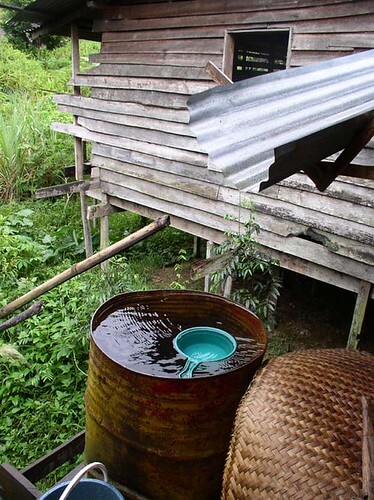Rainwater collection is a technique used to harvest rainfall and store it for later use. It can be beneficial in areas where water is scarce or of poor quality, and offers an alternative to relying solely on public water sources. This article discusses successful practices for maximizing rainwater collection, including setting up a collection system, maintaining the system, and optimizing the system. These strategies are designed to ensure that the rainwater collected can be utilized efficiently with minimal effort. By implementing these practices, households can reduce their reliance on public water sources while also saving money in the long run.
Setting Up a Collection System
The establishment of a rainwater collection system requires careful planning and preparation. It is important to select the right type of collection system that is appropriate for the specific environment, as this will ensure that it can efficiently capture and store rainwater. Generally, there are two types of collection systems: above-ground or in-ground. Above-ground systems are usually easier to install and maintain but they may not be able to effectively collect large volumes of water due to their limited capacity. On the other hand, in-ground systems require more advanced installation techniques and maintenance activities but they can store larger volumes of water than an above-ground system.
In addition to selecting the appropriate type of collection system, it is also important to consider factors such as slope, directionality, soil conditions, and landscape features when setting up a rainwater harvesting system. This will help ensure that the collected rainfall is properly directed towards the storage tank or cistern for easy access later on. Furthermore, installing gutters or downspouts on rooftops can also be beneficial for redirecting captured water into a storage tank or cistern for later use.
Maintaining a Collection System
Regular inspection and maintenance of the collection system is essential for ensuring proper functioning. This should be done on a regular basis to ensure that all components are working correctly and any repairs or replacements can be made quickly if needed. The main components to inspect and maintain include the gutters, downspouts, catchment area, tank connections, overflow systems and pumps. All these parts should be regularly checked for signs of wear and tear such as rusting, blockages from debris, leaks or any other damage that might have occurred over time. It is also important to check for any potential hazards in order to keep the system safe from harm.
Finally, it is important to make sure that all water collected is properly filtered before being put into use. This will help reduce the risk of contamination by filtering out dirt and pollutants that may have been picked up along the way. Additionally, it will help prevent algae growth which can occur in stagnant water if not adequately treated. Regular cleaning of the filtration system should be done according to manufacturer’s instructions in order to get maximum efficiency out of your rainwater collection system.
Optimizing a Collection System
Optimizing a collection system requires careful consideration of various factors to ensure efficient and safe use of the collected rainwater. It is essential that any collection system is regularly maintained, inspected, and cleaned to ensure proper operation as well as to reduce the risk of contamination or breakdowns. Regular maintenance should include ensuring that all gutters, downspouts, filters, tanks, and pipes are in good condition and properly connected with no leaks or blockages. Furthermore, regular cleaning of gutters can help remove debris such as leaves and twigs which can impede water flow. Also important for optimizing a collection system is making sure that the capacity of the tank is sufficient for the amount of water being collected. An oversized tank will require more energy to fill while an undersized tank may not be able to capture all rainwater from a storm event before it overflows. Additionally, it is important to check for any potential sources of contamination near the collection site such as nearby sewage systems or chemical spills and make sure they are well away from any drinking water supplies. Finally, if possible it may be beneficial to install additional safety features such as overflow sensors or shutoff valves in case there are issues with overfilling or leak detection systems which can alert users when there is an issue with their collection system.
Conclusion
Rainwater collection is an effective way to harvest a renewable resource. It can be used for a variety of purposes, from drinking water to gardening and irrigation. To maximize the benefits of rainwater collection, one must properly set up and maintain the system, as well as optimize it for maximum efficiency. With proper setup, maintenance and optimization, rainwater collection systems can provide a reliable source of natural water that is clean and safe for use in numerous applications. Through careful management of resources and implementation of best practices, individuals can effectively take advantage of this sustainable source of water that helps conserve overall water use.

